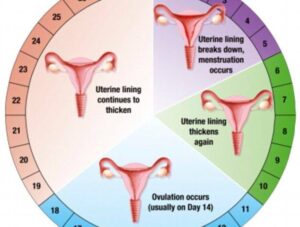
Menstruation is a normal biological process which maintains the female reproductive cycle. Without this process, there would be no ovulation and hence, no reproduction. This topic remains elusive and is even considered taboo in different parts of the world. In developing countries like India, women have to deal with menstruation secretly. Poverty, gender inequality and repressive conditioning of women folks continue to deny access to proper menstrual hygiene products.
It is the fundamental right of every woman to be able to manage her menstruation hygienically.
Menstrual Hygiene Management is defined by United Nations as the use of clean menstrual management products to soak menstrual discharge by women that are changeable in privacy as required, with proper access to water, soap and disposal methods.
REASONS FOR POOR MENSTRAUL MANAGEMENT
Poverty is one of the top reasons that force women to resort to unhygienic menstrual absorbents use. Rural women in developing nations have been reported to use things like mud, old rags, dried cow dung cakes, wood husk, and even ash to contain menstrual blood. Not only are these things dangerous to the health, but they are also inconvenient to use and hinder day to day activity of women who use them.
Lack of awareness regarding the importance of menstrual hygiene, arising from a lack of education and taboo surrounding menstruation, contribute in a major way why menstruating women do not know the use of menstrual hygiene products. They continue using traditional methods in hiding and expose themselves to health risks in periods.
Regressive menstruation beliefs in many societies forbid women to dry their menstrual clothes in the sun. They are washed during the night and dried in dark areas. These act as breeding ground for germs and their use causes infection or reproductive and urinary tract infections in women.
TYPES OF ABSORBENT USED DURING MENSTRUATION
The preference of sanitary protection material is based on personal choice, cultural acceptability, economic status, and availability in local market. Along with basic sanitation facilities, one should be also provided with soap and menstrual absorbents to manage menstruation hygiene.
1. Reusable cloth pad
2. Disposable sanitary pads
3. Tampons
4. Menstrual cups
And many others
MENSTRUAL WASTE DISPOSAL TECHNIQUES IN URBAN AREAS
where modern Disposable menstrual products are used they dispose of them by flushing in toilets and throwing in dustbins or through solid waste management, but, in rural areas, there are many options for disposing menstrual waste such as by burying, burning, and throwing in garbage or in pit latrines.
In rural areas, mostly women use reusable and non-commercial sanitary materials like reusable pads or cloths. Thus, they generate lesser amount of menstrual waste as compared to women in urban areas who rely on commercial disposable pads. The menstrual material was disposed of according to the type of product used, cultural beliefs, and location of disposal.
In slum areas, women dispose their menstrual waste into pit latrines as burning and burial were difficult due to limited privacy space.
The reason behind that is it was seen by men or used in witchcraft.
CONSEQUENCES OF POOR MENSTRUAL WASTE MANAGEMENT
1. Blockage of sewage system is a global problem and major contributing factor is flushing of menstrual products in toilets.
2. Deodorised sanitary products used by women/girls contain chemicals used in bleaching such as organochlorines which when buried in the soil disturb the soil microflora and decomposition takes time.
3. People living alongside river banks throw menstrual waste into water bodies which contaminate them. These materials soaked with blood were breeding places for germs and pathogenic microbes.
Sanitary products soaked with blood of an infected women/girl may contain hepatitis and HIV viruses which retain their infectivity in soil and live up to six months in soil. The clogged drainage with napkins has to be unblocked and cleaned manually by conservancy workers with their bare hands without proper protection and tools. This exposes the workers to harmful chemicals and pathogens.
CONCLUSION
Menstrual hygiene should be promoted by implementing a course on menstruation and menstrual hygiene management.
Teachers should be educated and trained to impart knowledge about menstruation and menstrual hygiene management among students.
Social and electronic media also play an important role to make the girls and women aware about the latest menstrual products, different manufacturers, government policies, and so forth.
Subsidies should be given on menstrual products so that every girl/women can afford them easily.
Non-government organizations should come forward to educate rural people about menstruation, menstrual hygiene management, importance of toilets at homes, hand washing, diseases related to reproductive tract due to poor hygiene, and so forth.
Emphases should be given on the use of reusable sanitary or cloth pads to overcome the problem of disposal.
Girls and women should be aware of the consequences of disposing used menstrual products in open or flushing them in toilets.
Dustbins with proper lids should be placed in the toilets.
If possible, incinerators should be installed at homes, schools, and community levels.
Also, ignorance, misconceptions, unsafe practices, and illiteracy of the mother and child regarding menstruation are the root causes of many problems. So, there is a big need to encourage adolescents at school levels to practice safe and hygienic behaviors.
#Eazy learn/ Mrs Chinyere Precious Ozioma